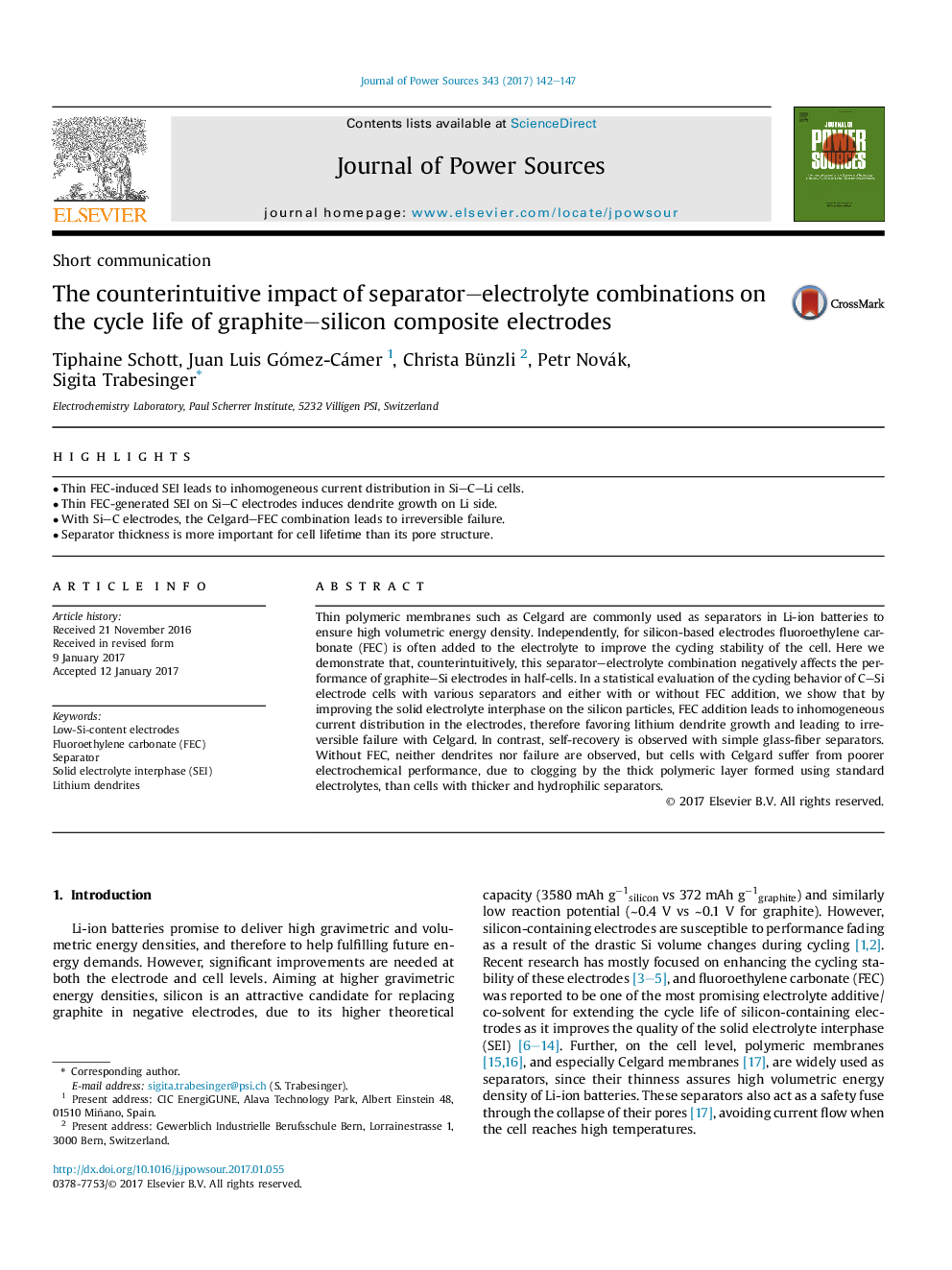| Article ID | Journal | Published Year | Pages | File Type |
|---|---|---|---|---|
| 5149428 | Journal of Power Sources | 2017 | 6 Pages |
Abstract
Thin polymeric membranes such as Celgard are commonly used as separators in Li-ion batteries to ensure high volumetric energy density. Independently, for silicon-based electrodes fluoroethylene carbonate (FEC) is often added to the electrolyte to improve the cycling stability of the cell. Here we demonstrate that, counterintuitively, this separator-electrolyte combination negatively affects the performance of graphite-Si electrodes in half-cells. In a statistical evaluation of the cycling behavior of C-Si electrode cells with various separators and either with or without FEC addition, we show that by improving the solid electrolyte interphase on the silicon particles, FEC addition leads to inhomogeneous current distribution in the electrodes, therefore favoring lithium dendrite growth and leading to irreversible failure with Celgard. In contrast, self-recovery is observed with simple glass-fiber separators. Without FEC, neither dendrites nor failure are observed, but cells with Celgard suffer from poorer electrochemical performance, due to clogging by the thick polymeric layer formed using standard electrolytes, than cells with thicker and hydrophilic separators.
Related Topics
Physical Sciences and Engineering
Chemistry
Electrochemistry
Authors
Tiphaine Schott, Juan Luis Gómez-Cámer, Christa Bünzli, Petr Novák, Sigita Trabesinger,
